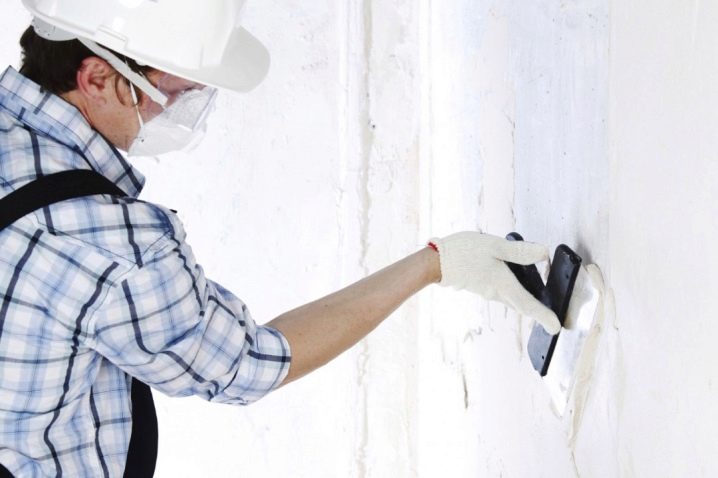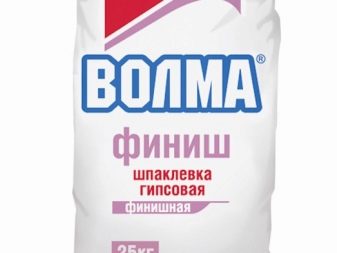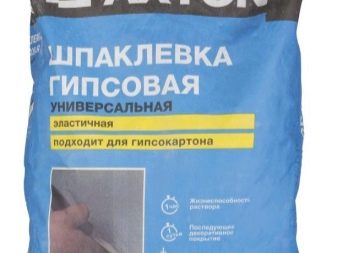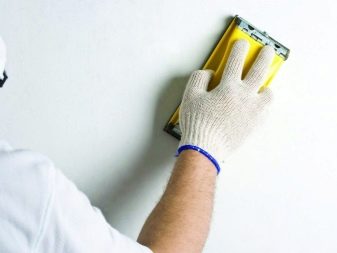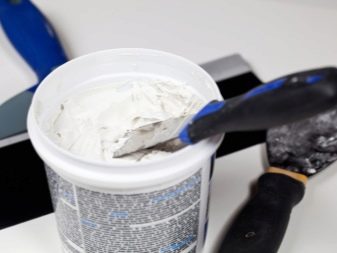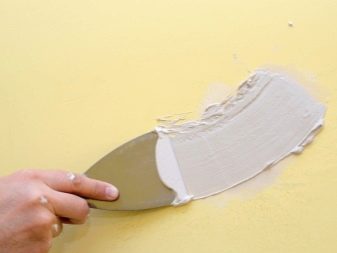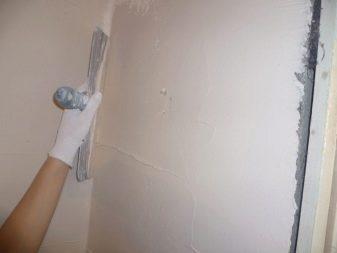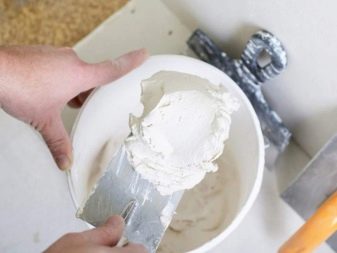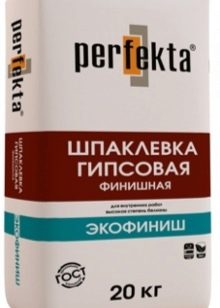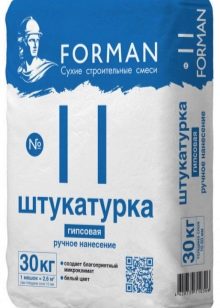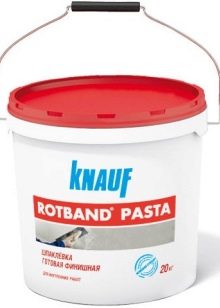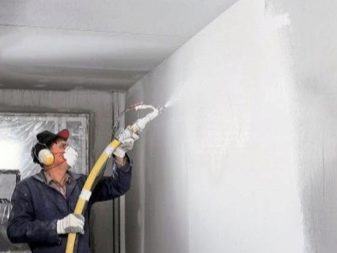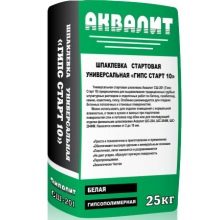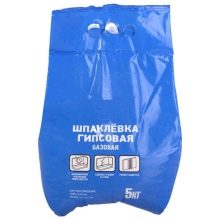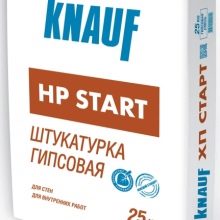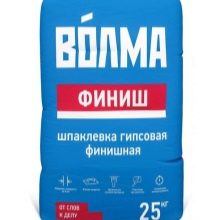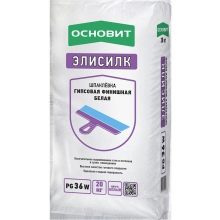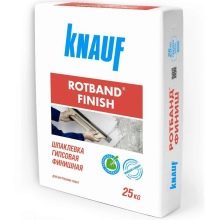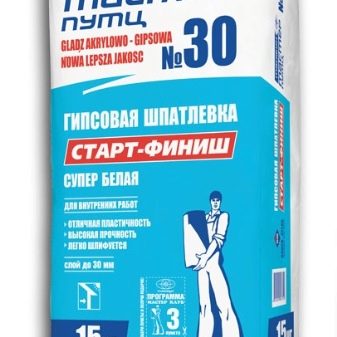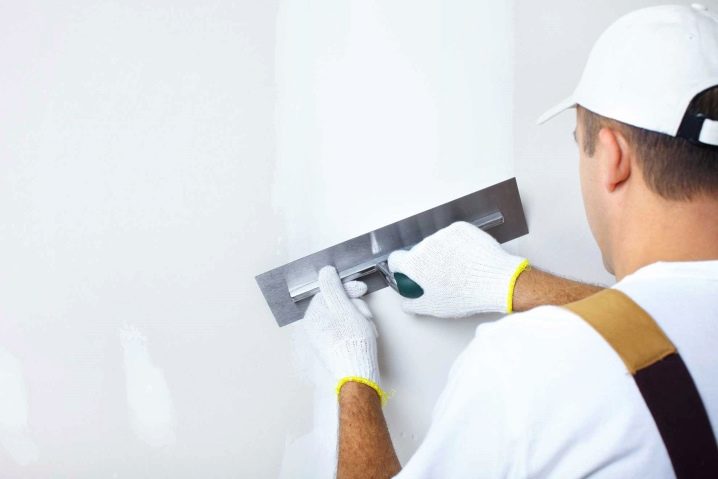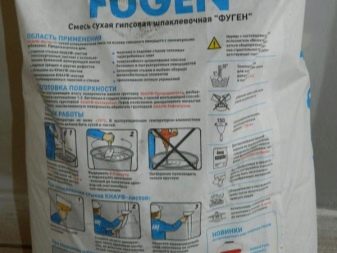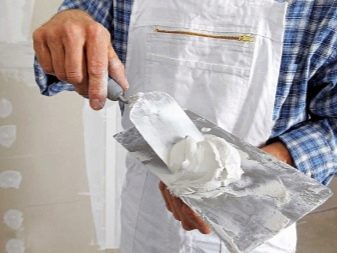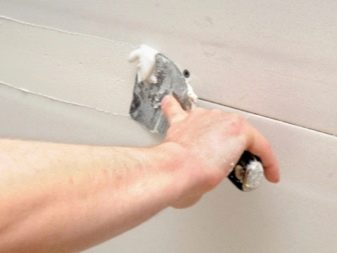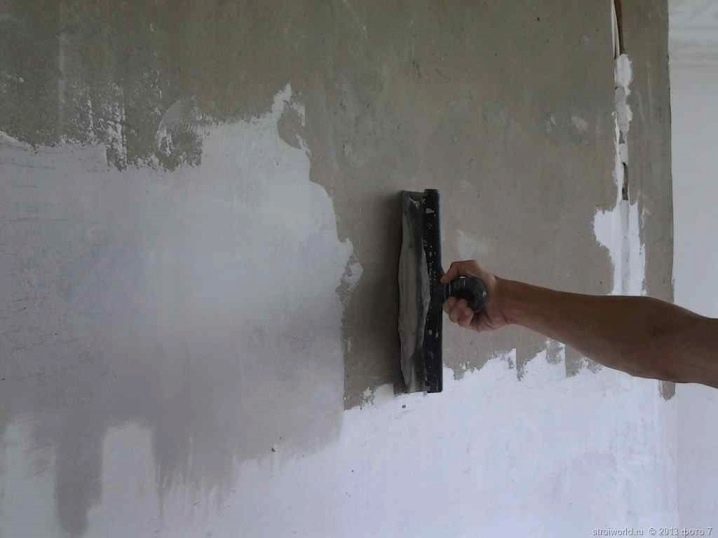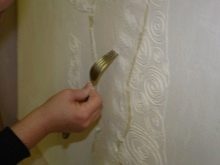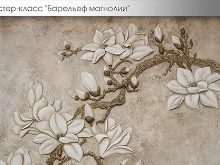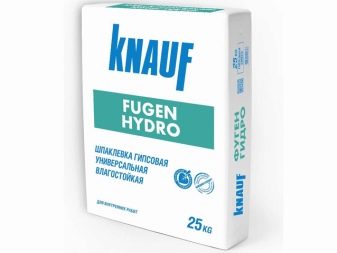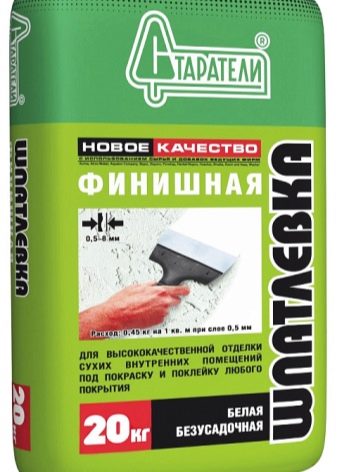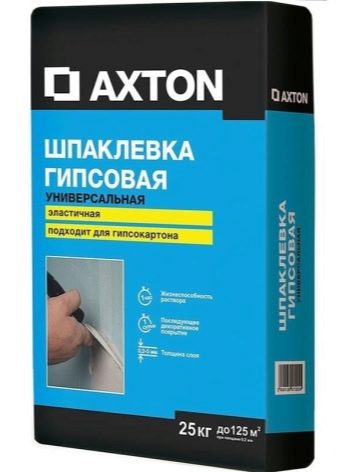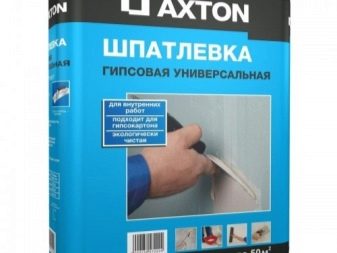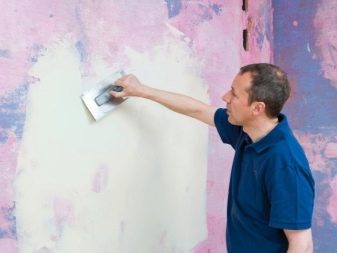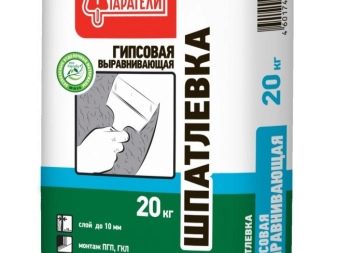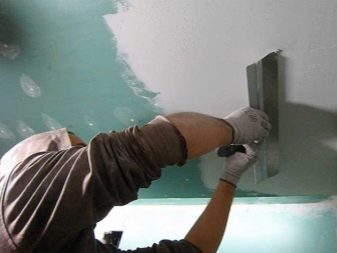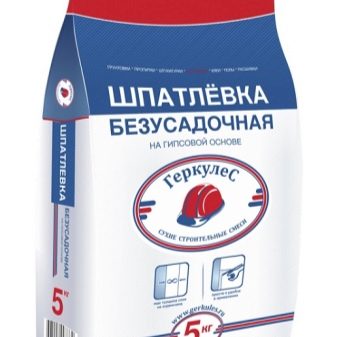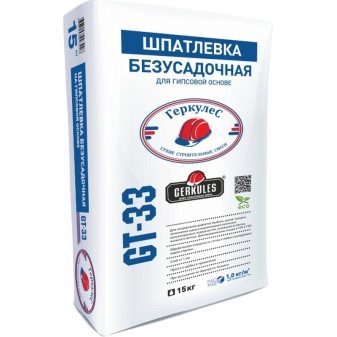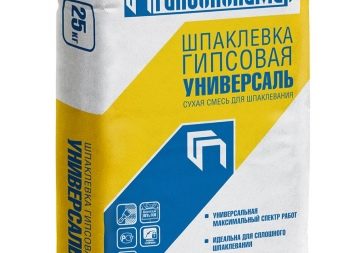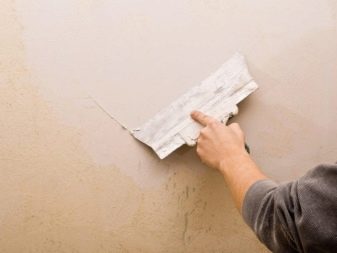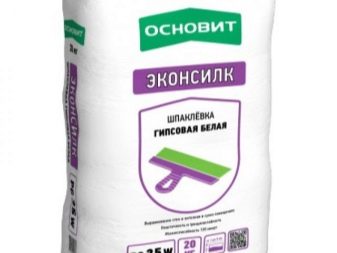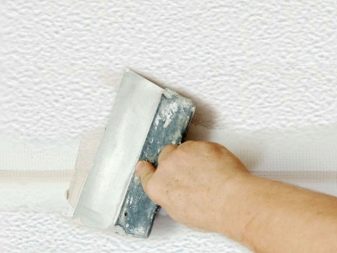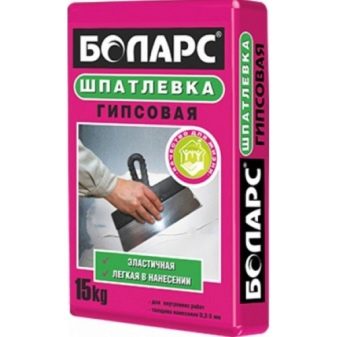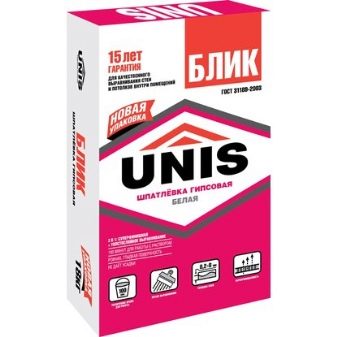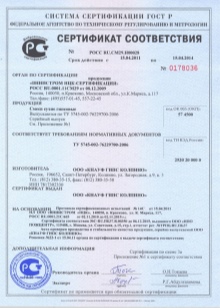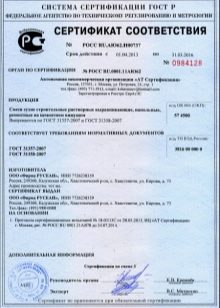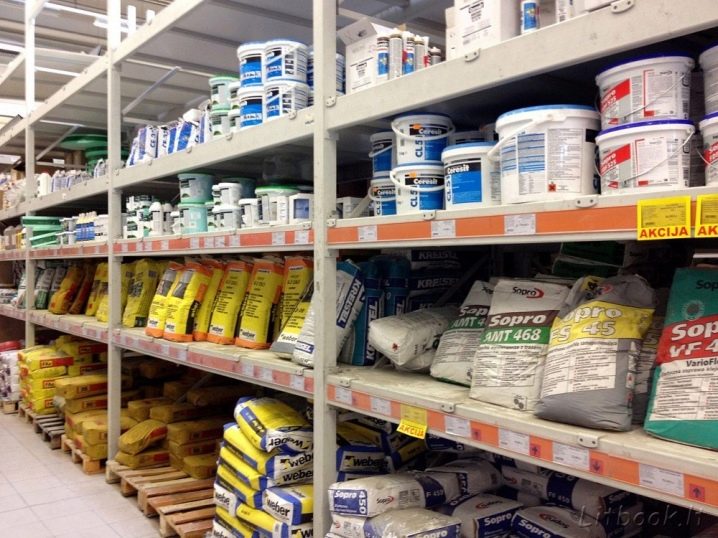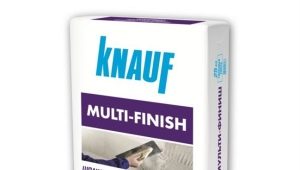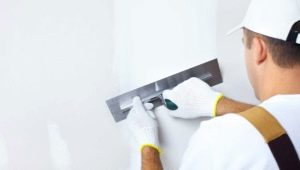Gypsum plaster: pros and cons
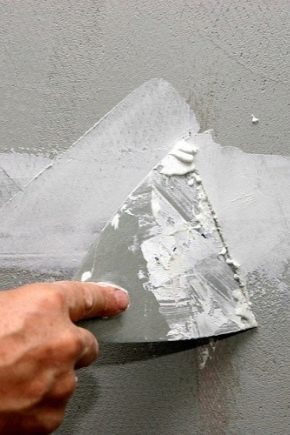
One of the most significant moments during repairs is the quality preparation of wall coverings for their subsequent finishing. To make the walls as smooth and perfectly smooth as possible will plaster plaster. The gypsum that is included in its composition is a clean and safe component that can be used to repair living space.
There is a large assortment of putties for every taste, and the puttying can be carried out on its own, without involving experienced specialists to work.
Special features
Gypsum-based putty is intended for application to a specific surface of the wall. It allows you to create a solid foundation for pasting wallpaper.The thickness of the greatest gypsum fraction is 0.15 mm. This kind of putty is the best choice for living spaces, since using gypsum will not release toxic substances, will create optimal climatic conditions in any room.
Advantages and disadvantages
We note the main advantages of putty.
- It is easy to use. Even a man in the street will be able to put plaster putty without experience with similar building compositions.
- This type of product is quite solid, durable and long serving.
- It looks aesthetically pleasing.
- This material will prevent the occurrence of cracks and delamination on the treated surface.
- Its vapor permeability contributes to a positive microclimate in any room.
- It is distinguished by an acceptable cost.
- There is the possibility of using plaster putty in combination with various surfaces (plasterboard, brick, concrete).
- High quality plaster adhesion with many types of surfaces is noted.
- The composition of gypsum putty includes various modifiers and plasticizers, so there will be no cracking on the treated surface, creating protection against peeling or shrinkage of the material.
- Consumption of gypsum putty is usually 3 times less than that of similar compositions, so you can save on repairs.
- It is characterized by ease when applied and in the process of grinding.
- This product is characterized by an environmentally friendly composition of natural ingredients, and harmless synthetic components are used in the polymer subtype.
- This putty is distinguished by the quality of filling the existing cracks and excellent plasticity.
In addition to the positive traits, one can not but mention a number of drawbacks.
- Fear of high humidity. You can not use this mixture in rooms with high levels of humidity. Masters are not advised to use this mixture in the kitchen or in the bathroom.
- Certain temperature regimes are important for this putty; it is extremely susceptible to temperature changes.
- It can not be used in outdoor conditions. The mixture actively absorbs moisture, which complicates its use for facades.
The mixture immediately begins to swell, which leads to flaking.
- Gypsum mixes cannot be sanded when they have gained certain strength. Because it is important to start grinding in time: wait for the moment when the putty dries out, but will not be firm yet.For a person without experience, this stage can be a problem, it is possible that you will have to resort to the help of a specialist.
- It needs to be applied quickly. Putty can be found in powder form, which is diluted with water. After mixing, the composition must be applied within 20-40 minutes. It is impossible to dilute the prepared mixture a second time with water.
Kinds
The composition of gypsum putty includes various polymer additives and fillers, so it can dry in record time, forming a film on the surface of the wall that has a special strength and smoothness. A gypsum polymer is a mixture of 2 components: gypsum and polymer inclusions.
The polymer component in a mixture of gypsum greatly improves its quality characteristics:
- makes plaster composition plastic;
- strengthens its bending strength;
- promotes crack resistance;
- gives a low water resistance and frost resistance.
Manufacturers of building materials produce putty and in the form of dry mixes in large bags of durable paper (volume 5, 10, 30, 50 kg), as well as ready-to-use solution in plastic buckets (volume 5, 10 and 20 liters).To make the plaster coating more durable, it includes additional components: white quartz sand and marble powder. These components create a rough layer on the surface to be treated that promotes better adhesion when performing finishing works. Usually the color of the materials is white, in other varieties the tint is light gray.
In the manufacture of plaster diluted with water in the correct proportions, then stirred to a thick paste. Type of application of the composition selects the owner of the room. It can be either manual or automated, depending on the amount of work and the selected tool. More often drawing is carried out in one layer. Gypsum plaster is usually divided into 3 types. Consider their features.
Starting
This leveling compound is chosen for walls and ceilings, on which there are many cracks and various uneven places. This mixture can be smoothed even 1-2 cm of discrepancy. The basic mixture of gypsum is a grainy gray consistency. It is applied as thin as possible. If the surface drops are more substantial, it is useless to use a putty: a too heavy layer can fall off the wall.
For this kind of work is better to take plaster.
Finish line
This composition is used to make walls or ceilings smoother and more white. Apply a finish shrink putty before painting or finishing. There are no grains in the mass, and after complete solidification it becomes snow-white. This makes the application of paint a very easy process, and due to the white color the base coat of paint does not change.
Start-finish
Start-finish - a truly versatile and durable putty. It is chosen in order to align and prepare the walls for future decoration. With the right choice, you can save money and get the composition of excellent quality characteristics. Gypsum plaster quality hide seams and give your walls a beautiful snow-white tint.
Usually, gypsum plaster is not chosen for spaces with a high level of humidity. But if you get a high-strength moisture-resistant putty, you can be sure that the finishing work in the bathroom, pool or basement, as well as outside the room will pass without problems. Plasterers often face the question of choosing between cement and plaster putty (depending on the characteristics of the wall surfaces and the desired final result).For the most part for the decoration of residential premises, the choice stops on the gypsum product.
Specifications
The averaged technical indicators of gypsum plaster may vary. This may depend on the manufacturer and materials used.
We note the main criteria:
- The working temperature range is from +5 to +30 degrees.
- The thickness of the layer without reinforcing mesh should not exceed 5 mm.
- Powder dilution ratio: 1 part dry gypsum mix + 0.5 parts water.
- The setting time is 1 hour.
- Drying time - 3 hours.
- The curing time is about 7 days.
- The shelf life of the dry mixture in the package is six months from the date of issue.
To choose high-quality putty, you need to think about the methods of its use, which are often significantly different.
It is necessary to remember about various important parameters.
- For work indoors, you can buy a putty that is suitable for high-quality masking of cracks and crevices, due to the presence of chalk components in the composition will give him good plasticity.
Such a composition does not seize so quickly, which will allow to correct the damage without applying a subsequent layer.
- Remember, why do you need the selected putty. This may be starting application (to align the gap) and finish (to prepare the wall for finishing).
- Humidity level Too high a humidity level will make plaster stucco difficult to apply.
- The area of the wall on which you want to put putty. Normal consumption per 1 m2 will require 1.2-1.4 kg of dry powder, but some types of putty are 0.9 - 1.0 kg for the same area.
In addition to surface area, you need to remember about significant damage., for which the adjustment of the finished composition may take a lot more than originally anticipated. For some ordinary people, an important factor is the information on how quickly the putty dries. Today in the shops you can buy any putty that is suitable for your home. Before acquiring, it is better to get acquainted with the positive and negative sides of any type of putty, find out what are the differences between different types of mixtures from different manufacturers, identify which product is better. Each of the modern construction companies will try to please the consumer (whether it is a starting or finishing product with plaster).
Scope of application
The use of gypsum putty is carried out in the preparation of indoor surfaces for the next finish. Due to the good adhesion properties, the composition can be applied to many materials.
The prepared mixture is suitable for:
- termination of wall and ceiling joints;
- filling in various cracks;
- elimination of all possible errors;
- quality filling joints between sheets of drywall.
It is better not to fill it with chipboard, you should not use on facing of stone and brick. Building material made of compressed large-sized chips (OSB slab) can be puttied with such a composition. However, before this, it is imperative to conduct a series of preparatory work. Any wall without plaster will have irregularities. Even if it is a new high-rise building, there will be various bevels and unsightly drops on its walls. Putty will make these imperfections invisible to the eye. If the base will be chipped, you can not do without high-quality putty coating.
Surfaces of wall and ceiling coverings to be finished with gypsum-based putty will be smooth to the touch.These walls can be painted, they are easier to glue wallpaper and apply other finishing materials. Putty can be used as a base material to create a stucco panel and other decorations for a modern interior.
Putty putty on the plaster layer, revetted with gypsum plasterboard and well-prepared concrete walls.
Regular plaster putty is not used in bathrooms, in the kitchen, in the sauna or pool. This finish instantly absorbs water and loses its strength. For exterior work, you need to choose a moisture-resistant type of material. The product of white color is very popular - a high degree of its whiteness helps to reduce paint consumption during the subsequent painting of surfaces.
Manufacturers
When it comes to the acquisition of building materials for the implementation of works, the main factor may be the choice of the company that manufactures them. The construction market offers products of well-known brands and yet very few well-known newcomers. If you want to choose inexpensive products of a little-known company, it is extremely important that its quality is no worse than that of the sought-after brands.Of the Russian manufacturers it is worth mentioning such well-known companies such as "Miners" and Axton.
Putty Axton is a unique composition for rough work with wall coverings. In the mixture there is a small fraction of gypsum with the addition of elements for excellent adhesion and enhancement of plasticity. After preparing such a solution, it can be used for only 1 hour, so there is no need to knead the whole bag at once: it is unlikely that you can apply such a volume to the wall in 60 minutes alone. The duration of drying of such a mixture is 20-22 hours (during this time it completely hardens).
Company "Miners" offers putty of different compositions. The most popular of them are polymeric and gypsum based materials. They are considered the leaders of Russian production. Small-fractional plaster with polymeric components enters "Staplers" hard putty.
It is sold in bags of various sizes so that the buyer can precisely select the quantity of raw materials he needs. Material consumption at a layer of 1 mm per m2 of surface does not exceed 1 kg. This putty in finished form should be consumed in 1 hour. The curing time of the mixture on the walls will be about 7-8 hours after the process of filling.
Non-shrinking putty company "Hercules" good for leveling already plastered walls.Often it serves to correct defects, to fill the joints of concrete bases. It can be used to align joints using reinforcing tape.
It is used for indoor work. Packaging is 5 and 15 kg.
Putty "Universal" of the company "Gipsopolimer" 25 kg packing is more often chosen in order to level the walls with various types of surfaces, as well as for repairing wide joints, filling cracks and other irregularities. It is used for interior work in rooms with the usual level of humidity, including the kitchen and bathroom, as well as for finishing the surfaces of the walls of children's and medical institutions.
High Strength Putty "Founds" suitable for sealing joints and butt joints, large and medium cracks. Pick it up only for filling indoors. It is characterized by rapid strength and crack resistance. This composition is in demand from buyers.
Putty plaster company "Bolars" necessary for the last stage of the walls and ceilings. It is a non-shrink elastic composition that forms a perfectly smooth surface.
Highly plastic putty Unis Gypsum-based is used for finishing the alignment of walls and ceilings under the decorative finish. It is recommended to use this composition for staining. The material is chosen for heated rooms with a normal level of humidity. This putty is highly plastic and easy to sand. The composition is distinguished by a balanced formula, the result of the finishing is especially pleasing to professional craftsmen.
Useful recommendations
In the construction market can be found and fake materials. Often in a fake include gypsum unimportant quality, which after drying will crack on the walls. Such formulations may also include unspecified harmful substances on the packaging. For this reason, well inspect the product and require a certificate of its quality. If there is documentation, you have a quality product.
It should be remembered that gypsum-based mixtures have a short shelf life. He is only 6 months old. After the expiration date, the composition will lose many positive properties, which ultimately will affect the final result of its use. If you do not plan to carry out repairs within a month or two, do not buy the material: it is better to purchase it immediately before the finishing process itself, because it is always on sale.
To learn how to properly dilute the finishing plaster putty, see the following video.
